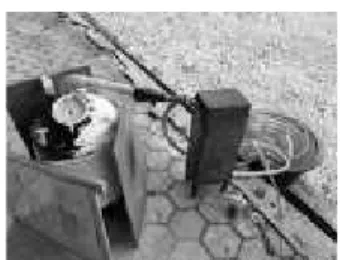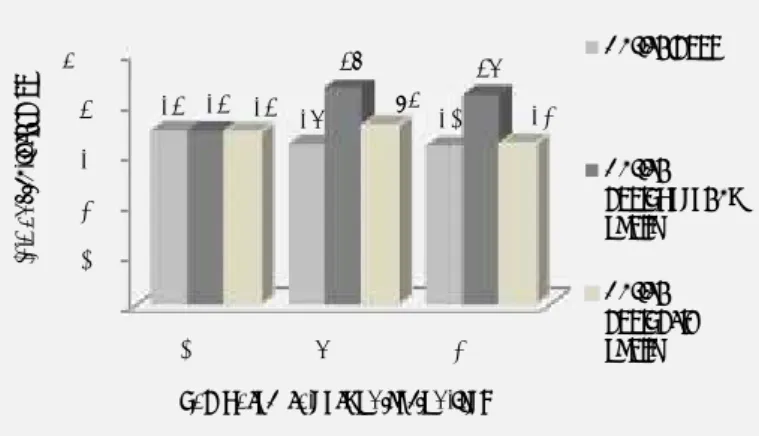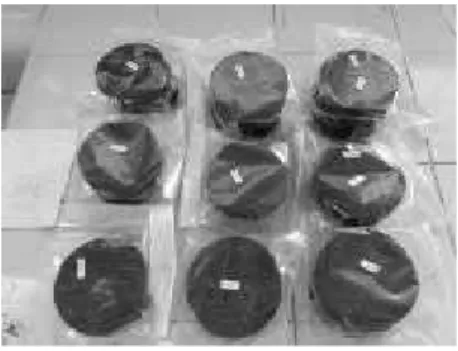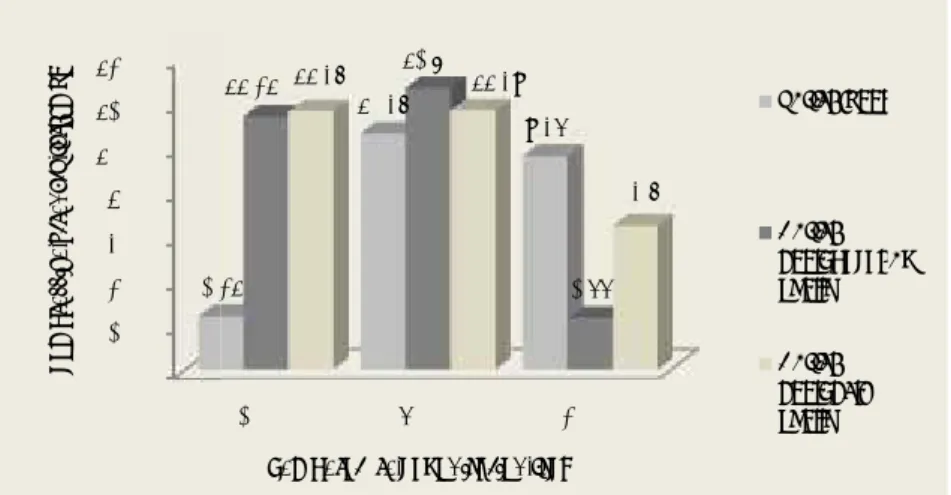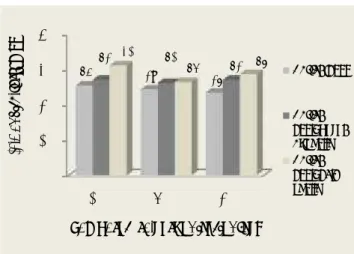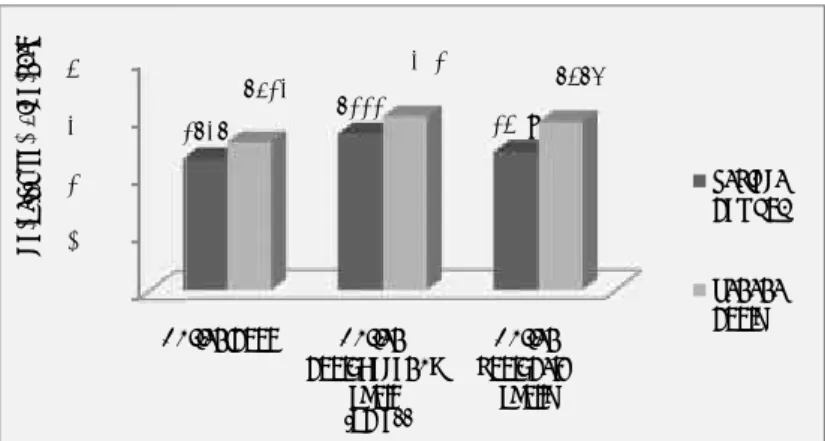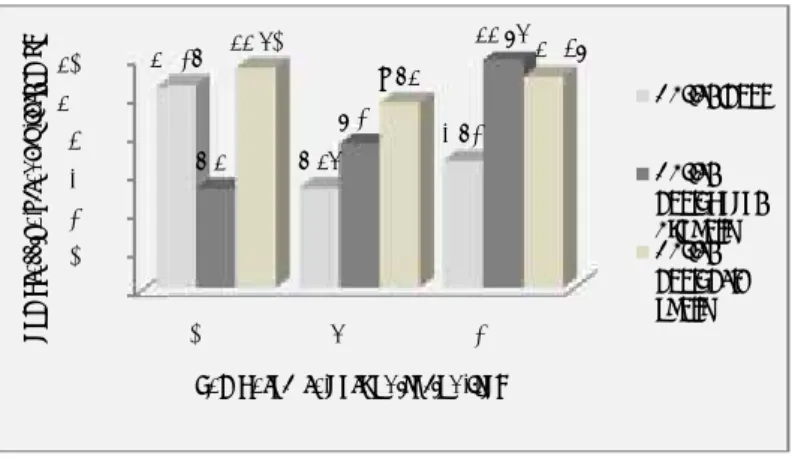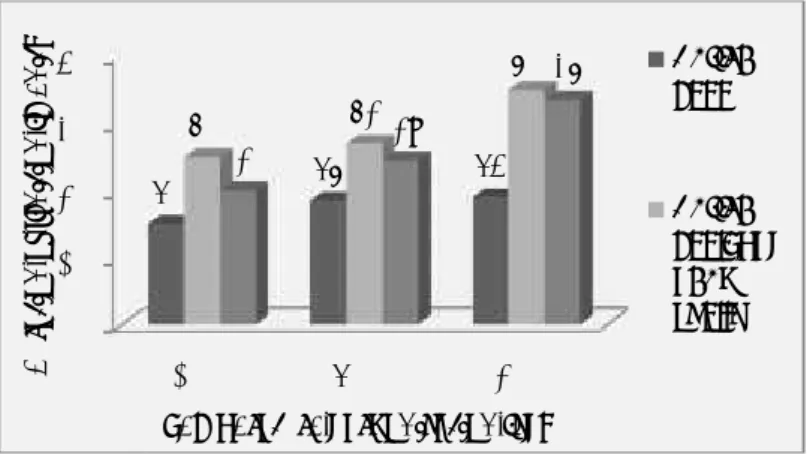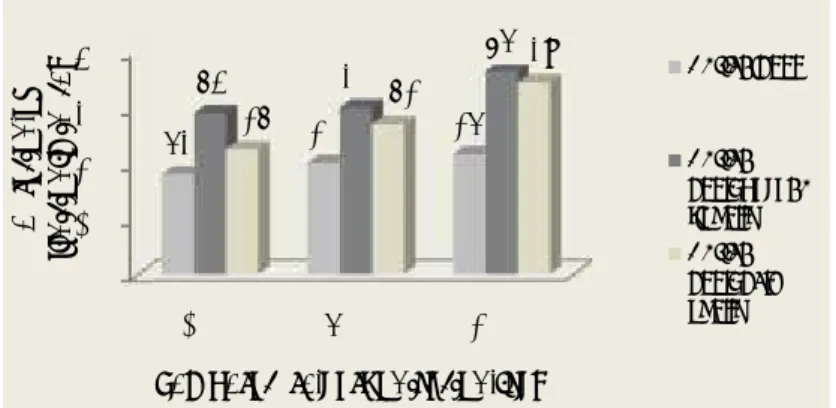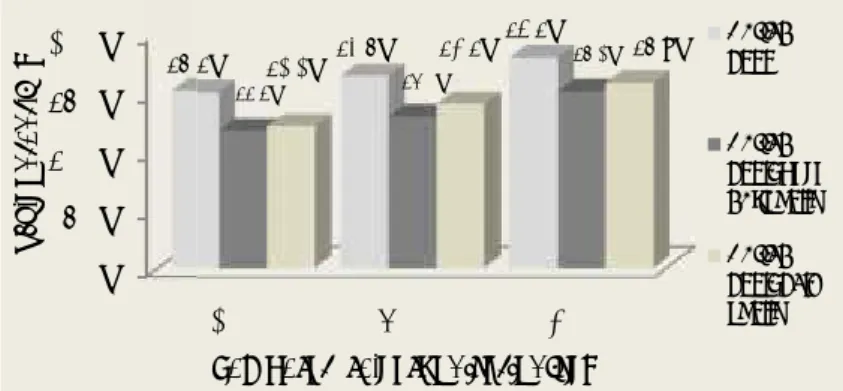IOP Conference Series: Materials Science and Engineering
PAPER • OPEN ACCESS
Quality in Research: International Symposium on Materials, Metallurgy, and Chemical Engineering
To cite this article: 2018 IOP Conf. Ser.: Mater. Sci. Eng. 316 011001
View the article online for updates and enhancements.
You may also like
Image quality guided iterative
reconstruction for low-dose CT based on CT image statistics
Jiayu Duan and Xuanqin Mou -
Dedicated convolutional neural network for noise reduction in ultra-high-resolution photon-counting detector computed tomography
Nathan R Huber, Andrea Ferrero, Kishore Rajendran et al.
-
Bentonite Enhanced Soil as an Alternative Landfill Liner in Rikut Jawu, South Barito Yulian Firmana Arifin and Sambelum -
This content was downloaded from IP address 36.69.15.133 on 21/12/2023 at 14:16
1
Content from this work may be used under the terms of theCreative Commons Attribution 3.0 licence. Any further distribution of this work must maintain attribution to the author(s) and the title of the work, journal citation and DOI.
Published under licence by IOP Publishing Ltd
1234567890‘’“”
QIR IOP Publishing
IOP Conf. Series: Materials Science and Engineering 316 (2018) 011001 doi:10.1088/1757-899X/316/1/011001
WELCOME FROM THE RECTOR OF UNIVERSITAS INDONESIA It is both a pleasure and honor for me to welcome you all to the 15th International Conference on QiR (Quality in Research) 2017 in Nusa Dua, Bali, Indonesia.
Universitas Indonesia strives to be one of the leading research universities and the most outstanding academic institution in the world. UI is distinctive among research universities in its commitment to the academic invention and research activities through various scientific programs. QiR 2017 is our main academic conference in the field of engineering and technology which has been successfully held for the last two decades. It is our hope that this world class scientific program would showcase our scientists and researchers achievements and provide forums for scientific exchanges in their respective fields.
The theme this year of ‘Science, Technology and Innovation for Sustainable World’, is very relevant with the fact that the globalization today results in very competitive atmosphere in all aspects. However, this flourishing competition should consider the harmony and balance between human needs and the environment quality for creating favorable sustainable future.
Scientists and researchers, hand in hand with industrial experts are creating and developing new sustainable technologies that enable us to make products and services more efficient, design better buildings, produce safer cars, keep people healthier and building smarter cities.
I extend my sincere thanks to the Faculty of Engineering Universitas Indonesia, supporting parties and institutions for their participation and contributions in QiR 2017. I would also thank our colleagues from Universitas Udayana and Politeknik Negeri Bali for their gracious support and hospitality. Additionally, I extend a hearty thank you to the members of the organizing committees for dedicating their valuable time so that each one of us enjoys an exceptional conference program over the next several days. May we have a successful, stimulating, fruitful and rewarding conference.
Prof. Dr. Ir. Muhammad Anis, M.Met.
Rector
Universitas Indonesia
PREFACE
2
1234567890‘’“”
QIR IOP Publishing
IOP Conf. Series: Materials Science and Engineering 316 (2018) 011001 doi:10.1088/1757-899X/316/1/011001
WELCOME FROM THE DEAN OF FACULTY OF ENGINEERING UNIVERSITAS INDONESIA
Welcome to the 15th International Conference on QiR (Quality in Research) 2017. The Faculty of Engineering Universitas Indonesia is delighted to host our flagship international academic event this year back in Bali, Indonesia. This two-day, biennial conference is presented together with our co-hosts Universitas Udayana and Politeknik Negeri Bali with the hope that this would be able to provide an international media for exchange of the knowledge, experience and research as well as the review of progress and discussion on the state of the art and future trend of prospective collaboration and networking in broad field of science, technology and innovation.
The main theme for this year conference, “Science, Technology and Innovation for Sustainable World” is consistent with the mission of our faculty to be a leading institution with the initiatives that responds to local, national and global societal needs. In that context, the Faculty of Engineering Universitas Indonesia is performing state-of-the arts research and development in engineering and architecture areas which results in technology and innovation which contribute to sustainable development at both national and global level. QiR 2017 provides platforms and forums to disseminate our scientific achievements and exchange information with our counterparts from Indonesia and all over the world. This event will allow for further research and education collaborations between Universitas Indonesia and its partners worldwide.
I would like to express my deepest appreciation to our sponsors, supported parties and various contributors for their never ending supports of this conference. I would also like to convey my gratitude to all of our distinguished speakers for making the time to share their knowledge with us. To our fellow researchers and/or practitioners from Indonesia and overseas, welcome and enjoy your stay in this Nusa Dua, Bali. I would also like to invite all participants in expressing our appreciation to all members of the QiR 2017 organizing committee for their hard work in making this conference success.
Prof. Dr. Ir. Dedi Priadi, DEA Dean Faculty of Engineering Universitas Indonesia
PREFACE
3
1234567890‘’“”
QIR IOP Publishing
IOP Conf. Series: Materials Science and Engineering 316 (2018) 011001 doi:10.1088/1757-899X/316/1/011001
WELCOME FROM THE QiR 2015 ORGANIZING COMMITTEE
On behalf of the organizing committee, it is a great pleasure for us to welcome you to the 15th International Conference on Quality in Research (QiR) 2017 to be held in Bali, Indonesia on July, 24 – 27, 2017. This biennial event is co-organized with the Faculty of Engineering Universitas Udayana and Politeknik Negeri Bali.
The main theme for this year conference is “Science, Technology and Innovation for Sustainable World”. Under this theme the conference
focuses on the innovative research and contribution in science and technology toward achieving sustainable world. In line with this theme, it is our utmost pleasure to hold the QiR 2017 in conjunction with the 6th IEEE-International Conference on Advanced Logistics and Transport (ICALT), the 2nd International Symposium on Biomedical Engineering (ISBE 2017), International Conference in Saving Energy in Refrigeration and Air Conditioning (ICSERA) and the 3rd Biannual Meeting on Bioprocess Engineering.
The QiR 2017 brings together national and international academicians, researchers, executives, government, industrial and business officials, practitioners and leaders to present and discuss a vast range of engineering, architectural designs and community development based on green and smart technology. It is our hope and aim that this conference would be able to provide an international media for exchange of the knowledge, experience and research as well as the review of progress and discussion on the state of the art and future trend of prospective collaboration and networking in broad field of science, technology and innovation. Furthermore, QiR 2017 benefits industry sector, since it would create a close contact between and among the audiences. The audiences mostly come from different job and activities: therefore this is a great potential and opportunity to meet each other, creating fruitful discussions and broaden business relationship.
QiR has been growing, since its first event two decades ago, into our flagship academic event with international reputation. This year, we have received almost 1000 submissions from more than 26 countries. Along with our events in conjunction, more than 500 oral and poster presentations is scheduled with expected 700 participants gather in the event.
On behalf of QiR 2017 committee, we would like to thank all of our speakers, participants, contributors, partners and professional associations for their generous contributions. We also would like to acknowledge the support from our International Advisory Board members and distinguished reviewers. Last but not least, a special thanks to our local co-organizer, Universitas Udayana and Politeknik Negeri Bali.
We wish all of you a productive and rewarding conference, also a pleasant and memorable stay in Nusa Dua, Bali, Indonesia.
Thank you and we hope to see you again in QiR 2019.
Ardiyansyah, Ph.D.
General Chair of QiR 2017 Organizing Committee
PREFACE
Table of contents
Open all abstracts
Preface
Papers
Intl. Conf. on Saving Energy in Refrigeration and Air Conditioning (ICSERA)
Volume 316 2018
Previous issue Next issue
Quality in Research: International Symposium on Materials, Metallurgy, and Chemical Engineering 24–
27 July 2017, Bali, Indonesia
Accepted papers received: 07 February 2018 Published online: 27 March 2018
011001 OPEN ACCESS
Quality in Research: International Symposium on Materials, Metallurgy, and Chemical Engineering
View article PDF Open abstract
011002 OPEN ACCESS
Conference Organizer
View article PDF Open abstract
011003 OPEN ACCESS
Acknowledgement
View article PDF Open abstract
011004 OPEN ACCESS
Peer review statement
View article PDF Open abstract
012001 OPEN ACCESS
Studies of the water adsorption on Lampung's natural zeolite of Indonesia for cooling application D A Wulandari, Nasruddin and Lemington
View article PDF Open abstract
012002 OPEN ACCESS
Characteristics Air Flow in Room Chamber Test Refrigerator Household Energy Consumption with Inlet Flow Variation
This site uses cookies. By continuing to use this site you agree to our use of cookies. To find out more, see our Privacy and Cookies policy.
Intl. Conf.on Dwelling Form (IDWELL) 2017
Intl. Conf.on Dwelling Form (IDWELL) 2017 Intl. Symp. on Architecture
Intl. Symp. on Architecture
Intl. Symp. on Chemical Eng.
Edy Susanto, M. Idrus Alhamid, Nasruddin and Budihardjo View article PDF Open abstract
012003 OPEN ACCESS
The floating houses of Sintang City: space, resources and political nexus M S Lubis, T Y Harjoko and D Susanto
View article PDF Open abstract
012004 OPEN ACCESS
The concept of sustainable prefab modular housing made of natural fiber reinforced polymer (NFRP)
E Setyowati and E E Pandelaki
View article PDF Open abstract
012005 OPEN ACCESS
Thermal Effectiveness of Wall Indoor Fountain in Warm Humid Climate J A P Seputra
View article PDF Open abstract
012006 OPEN ACCESS
The Crux of Minimalist Architecture: A Local Strategy of Housing Design in Jakarta or a Break Free from Traditions?
Yulia Nurliani Lukito and Bella Previta Handoko View article PDF Open abstract
012007 OPEN ACCESS
Degradation Behaviour of Gamma Irradiated Poly(Acrylic Acid)-graft-Chitosan Superabsorbent Hydrogel
Dhena Ria Barleany, Alpin Ilhami, Dea Yusuf Yudanto and Erizal View article PDF
Open abstract
012008 OPEN ACCESS
The Use of Multi-Reactor Cascade Plasma Electrolysis for Linear Alkylbenzene Sulfonate Degradation
Nelson Saksono, Ibrahim, Zainah and Trisutanti Budikania View article PDF Open abstract
012009 OPEN ACCESS
Carbon nanotubes shynthesis in fluidized bed reactor equipped with a cyclone
This site uses cookies. By continuing to use this site you agree to our use of cookies. To find out more, see our Privacy and Cookies policy.
P Setyopratomo, M Sudibandriyo and P P D K Wulan View article PDF Open abstract
012010 OPEN ACCESS
The effect of heating temperature on cytotoxicity and α-mangostin yield: Mangosteen pericarp juice and mangosteen extract
Kamarza Mulia, Fitria Hasanah and Elsa A Krisanti View article PDF Open abstract
012011 OPEN ACCESS
Hydrogen Generation by Koh-Ethanol Plasma Electrolysis Using Double Compartement Reactor Nelson Saksono, Johannes Sasiang, Chandra Dewi Rosalina and Trisutanti Budikania
View article PDF Open abstract
012012 OPEN ACCESS
Effect of Feed Gas Flow Rate on CO Absorption through Super Hydrophobic Hollow Fiber membrane Contactor
Sutrasno Kartohardjono, Kevin Alexander, Annisa Larasati and Ivander Christian Sihombing 2
View article PDF Open abstract
012013 OPEN ACCESS
The effect of hydrochloric acid addition to increase carbon nanotubes dispersibility as drug delivery system by covalent functionalization
P P D K Wulan, S H Ulwani, H Wulandari, W W Purwanto and K Mulia View article PDF
Open abstract
012014 OPEN ACCESS
CFD study of mixing miscible liquid with high viscosity difference in a stirred tank S Madhania, A B Cahyani, T Nurtono, Y Muharam, S Winardi and W W Purwanto
View article PDF Open abstract
012015 OPEN ACCESS
CFD Modelling of Adsorption Behaviour in AGN Tank with Polyethylene Terephthalate Plastic Waste Based Activated Carbon
Yuliusman, M K Afdhol, Alristo Sanal and Nasruddin View article PDF Open abstract
012016 OPEN ACCESS
Carbon monoxide and methane adsorption of crude oil refinery using activated carbon from palm shells as biosorbent
Yuliusman, M K Afdhol and Alristo Sanal
View article PDF Open abstract
012017 OPEN ACCESS
Synthesis and characterization of methyltrihydroxysilane water repellent
This site uses cookies. By continuing to use this site you agree to our use of cookies. To find out more, see our Privacy and Cookies policy.
A Z Abidin, M N Harjandi, V Wirawan and S M Suharno View article PDF Open abstract
012018 OPEN ACCESS
Preparation of hollow mesoporous carbon spheres and their performances for electrochemical applications
T Ariyanto, G R Zhang, A Kern and B J M Etzold View article PDF Open abstract
012019 OPEN ACCESS
Reaction product of pyrogallol with methyl linoleate and its antioxidant potential for biodiesel H Sutanto, L Ainny, Lukman, B H Susanto and M Nasikin
View article PDF Open abstract
012020 OPEN ACCESS
Catalytic Pyrolysis of Waste Plastic Mixture
Ferdianta Sembiring, Chandra Wahyu Purnomo and Suryo Purwono View article PDF
Open abstract
012021 OPEN ACCESS
Studies of Carbonization Process on the Production of Durian Peel Biobriquettes with Mixed Biomass Coconut and Palm Shells
Ellyta Sari, Pasymi, Umar Khatab, Reni Desmiarti, Rian Ariansyah, Hariadi and Sutra View article PDF
Open abstract
012022 OPEN ACCESS
Determination of Extraction Process Conditions of Gambier Catechin (Uncaria Gambier Roxb) from Solok Bio Bio Lima Puluh Kota District – West Sumatera
Elly Desni Rahman, Ellyta Sari, Burmawi, Frizka and Endah View article PDF Open abstract
012023 OPEN ACCESS
Monoglyceride contents in biodiesel from various plants oil and the effect to low temperature properties
L Aisyah, C S Wibowo, S A Bethari, D Ufidian and R Anggarani View article PDF
Open abstract
012024 OPEN ACCESS
Synthesis of Biodiesel from Crude Palm Oil by Using Contact Glow Discharge Electrolysis Nelson Saksono, Danar Aditya Siswosoebrotho, Jeremia J. C. Pranata and Setijo Bismo
View article PDF Open abstract
012025 OPEN ACCESS
Effect of Mechanochemical and Roasting Techniques for Extraction of Rare Earth Elements from Indonesian Low-Grade Bauxite
This site uses cookies. By continuing to use this site you agree to our use of cookies. To find out more, see our Privacy and Cookies policy.
Intl. Symp. on Chemical Eng. Intl. Symp. on Mechanical and Maritime Eng.
Intl. Symp. on Chemical Eng. The 3rd Biannual Meeting on Bioprocess Engineering
Intl. Symp. on Civil and Env. Eng.
E Kusrini, S Harjanto, F Herdino, EA Prasetyanto and A Rahman View article PDF
Open abstract
012026 OPEN ACCESS
Performance Study of Fluidized Bed Dryer with Immersed Heater for Paddy Drying S Suherman, N F Azaria and S Karami
View article PDF Open abstract
012027 OPEN ACCESS
Modeling of a Reaction-Distillation-Recycle System to Produce Dimethyl Ether through Methanol Dehydration
Y Muharam, L M Zulkarnain and A S Wirya View article PDF Open abstract
012028 OPEN ACCESS
Effect of sodium tripolyphosphate concentration and simulated gastrointestinal fluids on release profile of paracetamol from chitosan microsphere
Kamarza Mulia, Andrie and Elsa A Krisanti
View article PDF Open abstract
012029 OPEN ACCESS
Textile Dye Removal from Aqueous Solution using Modified Graphite Waste/Lanthanum/Chitosan Composite
E Kusrini, B Wicaksono, Y Yulizar, EA Prasetyanto and C Gunawan View article PDF
Open abstract
012030 OPEN ACCESS
Preparation and Characterization of Graphite Waste/CeO Composites E Kusrini, C S Utami, Nasruddin, E A Prasetyanto and Aji A Bawono
2
View article PDF Open abstract
012031 OPEN ACCESS
Improvement of cement plant dust emission by bag filter system Chandra Wahyu Purnomo, Wiratni Budhijanto, Muziibu Alfisyah and Triyono
View article PDF Open abstract
012032 OPEN ACCESS
Numerical and analytical investigation of steel beam subjected to four-point bending F. M. Farida, A Surahman and A Sofwan
View article PDF Open abstract
This site uses cookies. By continuing to use this site you agree to our use of cookies. To find out more, see our
Privacy and Cookies policy.
012033 OPEN ACCESS
STUDY GRADATION AND MOISTURE CONTENT OF SAND EMBANKMENT ON PEAT SUBJECTED VIBRATION POTENTIAL LIQUEFACTION
Soewignjo Agus Nugroho, Agus Ika Putra and Muhamad Yusa View article PDF
Open abstract
012034 OPEN ACCESS
Paper for Publication in IOP: Conference Series Leachate Treatment using three Years Aged Lysimetric Bioreactor Models
Djoko M. Hartono, Gabriel Andari Kristanto, Irma Gusniani Sofian, Ahmad Fauzan and Ghanis Mahdiana View article PDF
Open abstract
012035 OPEN ACCESS
Bearing capacity of helical pile foundation in peat soil from different, diameter and spacing of helical plates
F Fatnanta, S Satibi and Muhardi
View article PDF Open abstract
012036 OPEN ACCESS
Deformation of high performance concrete plate under humid tropical weather C Niken, T Elly, FX Supartono and I Laksmi
View article PDF Open abstract
012037 OPEN ACCESS
Performance of Asphalt Concrete Wearing Course (AC-WC) Utilizing Reclaimed Asphalt Pavement from Cold Milling Bound with 80/100 Pen Asphalt
I N.A. Thanya, I W. Suweda and G.K. Putra
View article PDF Open abstract
012038 OPEN ACCESS
THE INFLUENCE OF SAND's GRADATION AND CLAY CONTENT OF DIRECT SHEART TEST ON CLAYEY SAND
Gunawan Wibisono, Soewignjo Agus Nugroho and Khairul Umam View article PDF
Open abstract
012039 OPEN ACCESS
Using Cementitious Materials Such as Fly Ash to Replace a Part of Cement in Producing High Strength Concrete in Hot Weather
Gidion Turuallo and Harun Mallisa
View article PDF Open abstract
012040 OPEN ACCESS
Ductility of polystyrene waste panel Dewi Sulistyorini and Iskandar Yasin
View article PDF Open abstract
This site uses cookies. By continuing to use this site you agree to our use of cookies. To find out more, see our
Privacy and Cookies policy.
Intl. Symp. on Industrial Eng.
Intl. Symp. on Materials and Metallurgy
012041 OPEN ACCESS
The drag forces exerted by lahar flows on a cylindrical pier: case study of post Mount Merapi eruptions
Zainul Faizien Haza
View article PDF Open abstract
012042 OPEN ACCESS
Estimating design flood and HEC-RAS modelling approach for flood analysis in Bojonegoro city R M S Prastica, C Maitri, A Hermawan, P C Nugroho, D Sutjiningsih and E Anggraheni
View article PDF Open abstract
012043 OPEN ACCESS
Comparative analysis layers method of t-beam reinforcement Dimas Langga Chandra Galuh
View article PDF Open abstract
012044 OPEN ACCESS
Performance Analysis of Trans-Jakarta Bus Suburban Service Move-Across Greater Jakarta ESW Tangkudung and C Widyadayinta
View article PDF Open abstract
012045 OPEN ACCESS
Incorporating Servqual-QFD with Taguchi Design for optimizing service quality design M. Arbi Hadiyat
View article PDF Open abstract
012046 OPEN ACCESS
Segmentation of Natural Gas Customers in Industrial Sector Using Self-Organizing Map (SOM) Method
A M Masbar Rus, R Pramudita and I Surjandari View article PDF Open abstract
012047 OPEN ACCESS
The Effect Of Local Coal And Smelting Sponge Iron On Iron Content Of Pig Iron Soesaptri Oediyani, Pramita Juwita Sari and Djoko Hadi P
View article PDF Open abstract
012048 OPEN ACCESS
The 15 Internatonal Conference Quality in Resarch (Qir) 2017 Preparation and Ionic
Conductivity of Li Ca Ti O Using Waste Chicken Eggshells as ca Source for Anode Material of Lithium-Ion Batteries
Achmad Subhan, Dedy Setiawan and Sitti Ahmiatri Saptari th
3.9 0.1 5 12
This site uses cookies. By continuing to use this site you agree to our use of cookies. To find out more, see our Privacy and Cookies policy.
Intl. Symp. on Mechanical and Maritime Eng.
View article PDF Open abstract
012049 OPEN ACCESS
The tensile strength of mechanical joint prototype of lontar fiber composite Jefri Bale, Dominggus G.H. Adoe, Kristomus Boimau and Thomas Sakera
View article PDF Open abstract
012050 OPEN ACCESS
A preliminary study on the reduction of limonite ore by using rice husk as a reducing agent
Ahmad Maksum, Michael Kelvin E. Husein, Sulaksana Permana, Andi Rustandi and Johny Wahyuadi Soedarsono View article PDF
Open abstract
012051 OPEN ACCESS
Microstructural and Mechanical Properties of Welded High Strength Steel Plate Using SMAW and SAW Method for LPG Storage Tanks
Winarto Winarto, Rini Riastuti and Nur Kumeidi View article PDF Open abstract
012052 OPEN ACCESS
Upgrading tantalum and niobium oxides content in Bangka tin slag with double leaching
J W Soedarsono, S Permana, J K Hutauruk, R Adhyputra, A Rustandi, A Maksum, K S Widana, K Trinopiawan and M Anggraini
View article PDF Open abstract
012053 OPEN ACCESS
Preparation of Fe O /Bentonite Nanocomposite from Natural Iron Sand by Co-precipitation Method for Adsorbents Materials
Perdamean Sebayang, Candra Kurniawan, Didik Aryanto, Eko Arief Setiadi, Konni Tamba, Djuhana and Toto Sudiro 3 4
View article PDF Open abstract
012054 OPEN ACCESS
Properties of carbon composite paper derived from coconut coir as a function of polytetrafluoroethylene content
Fredina Destyorini, Indriyati, Nanik Indayaningsih, Bambang Prihandoko and Anne Zulfia Syahrial View article PDF
Open abstract
012055 OPEN ACCESS
Preparation of anatase TiO2 nanoparticles using low hydrothermal temperature for dye-sensitized solar cell
N Sofyan, A Ridhova, A H Yuwono and A Udhiarto View article PDF Open abstract
012056 OPEN ACCESS
This site uses cookies. By continuing to use this site you agree to our use of cookies. To find out more, see our Privacy and Cookies policy.
The 3rd Biannual Meeting on Bioprocess Engineering
Optimization of the Water Volume in the Buckets of Pico Hydro Overshot Waterwheel by Analytical Method Budiarso, Dendy Adanta, Warjito, A I Siswantara, Pradhana Saputra and Reza Dianofitra
View article PDF Open abstract
012057 OPEN ACCESS
The Design of Connection Solid Oxide Fuel Cell (SOFC) Integrated Grid with Three-Phase Inverter
Darjat, Sulistyo, Aris Triwiyatno and Humaid Thalib View article PDF Open abstract
012058 OPEN ACCESS
Two-phase Frictional Pressure Drop of Propane with Prediction Methods of Viscosity and Density in 500 μm Diameter Tube
S Novianto, A S Pamitran, R Koestoer and K Saito View article PDF Open abstract
012059 OPEN ACCESS
CFD investigation of pentamaran ship model with chine hull form on the resistance characteristics Yanuar and W Sulistyawati
View article PDF Open abstract
012060 OPEN ACCESS
Mathematical Modeling – The Impact of Cooling Water Temperature Upsurge on Combined Cycle Power Plant Performance and Operation
Ahmad Indra Siswantara, Hariyotejo Pujowidodo, Asyari Darius and Gun Gun Ramdlan Gunadi View article PDF
Open abstract
012061 OPEN ACCESS
Model Predictive Control Based on System Re-Identification (MPC-SRI) to Control Bio-H Production from Biomass
A Wahid and H M H Taqwallah
2
View article PDF Open abstract
012062 OPEN ACCESS
Producing armyworm (spodoptera sp.) Bioinsecticide based on cysteine protease of red ginger (zingiber officinale var. Rubrum)
N T Afnan, D F Nur, T S Utami, M Sahlan, A Wijanarko and H Hermansyah View article PDF
Open abstract
012063 OPEN ACCESS
Anaerobic digestion of citrus waste using two-stage membrane bioreactor
Ria Millati, Lukitawesa, Ervina Dwi Permanasari, Kartika Wulan Sari, Muhammad Nur Cahyanto, Claes Niklasson and Mohammad J. Taherzadeh
View article PDF Open abstract
This site uses cookies. By continuing to use this site you agree to our use of cookies. To find out more, see our Privacy and Cookies policy.
012064 OPEN ACCESS
Techno-economic analysis of lipase enzyme production from agro-industry waste with solid state fermentation method
I M Hidayatullah, R Arbianti, T S Utami, M Suci, M Sahlan, A Wijanarko, M Gozan and H Hermansyah View article PDF
Open abstract
012065 OPEN ACCESS
CO Absorption from Biogas by Glycerol: Conducted in Semi-Batch Bubble Column Pratiwi puji lestari, Aswati Mindaryani and S. K. Wirawan
2
View article PDF Open abstract
012066 OPEN ACCESS
Effect of some variable in cellulase production by Aspergillus niger ITBCC L74 using solid state fermentation
B Abdullah, S Maftukhah, E Listyaningrum and F Faradhiba View article PDF Open abstract
012067 OPEN ACCESS
Ozone Disinfection of Vibrio vulnificus in Shrimp Pond Water
Wara Dyah Pita Rengga, Echa Cahya Julyta Putri, Ria Wulansarie and Agus Suryanto View article PDF
Open abstract
012068 OPEN ACCESS
Ozone Technology for Pathogenic Bacteria of Shrimp (Vibrio sp.) Disinfection Ria Wulansarie, Wara Dyah Pita Rengga and Rustamadji
View article PDF Open abstract
012069 OPEN ACCESS
Influence of Nutrient Impregnated into Zeolite Addition on Anaerobic Digestion of Palm Oil Mill Effluent (POME)
M Mellyanawaty, F M A Chusna, H Sudibyo, N Nurjanah and W Budhijanto View article PDF
Open abstract
012070 OPEN ACCESS
Characterization of modified zeolite as microbial immobilization media on POME anaerobic digestion
Rochim B Cahyono, Sri Ismiyati, Simparmin Br Ginting, Melly Mellyanawaty and Wiratni Budhijanto View article PDF
Open abstract
012071 OPEN ACCESS
Kinetics of Anaerobic Digestion of Palm Oil Mill Effluent (POME) in Double-Stage Batch Bioreactor with Recirculation and Fluidization of Microbial Immobilization Media
L I Ramadhani, S I Damayanti, H Sudibyo and W Budhijanto View article PDF Open abstract
This site uses cookies. By continuing to use this site you agree to our use of cookies. To find out more, see our Privacy and Cookies policy.
JOURNAL LINKS
Journal home Journal scope
Information for organizers Information for authors Contact us
Reprint services from Curran Associates
012072 OPEN ACCESS
Modeling Lab-sized Anaerobic Fluidized Bed Reactor (AFBR) for Palm Oil Mill Effluent (POME) treatment: from Batch to Continuous Reactors
Muhammad Mufti Azis, Hanifrahmawan Sudibyo and Wiratni Budhijanto View article PDF
Open abstract
012073 OPEN ACCESS
Effect of biofilm and selective mixed culture on microbial fuel cell for the treatment of tempeh industrial wastewater
Rita Arbianti, Tania Surya Utami, Vifki Leondo, Elisabeth, Syafira Andyah Putri and Heri Hermansyah View article PDF
Open abstract
This site uses cookies. By continuing to use this site you agree to our use of cookies. To find out more, see our Privacy and Cookies policy.
This site uses cookies. By continuing to use this site you agree to our use of cookies. To find out more, see our Privacy and Cookies policy.
IOP Conference Series: Materials Science and Engineering
PAPER • OPEN ACCESS
Studies of Carbonization Process on the
Production of Durian Peel Biobriquettes with Mixed Biomass Coconut and Palm Shells
To cite this article: Ellyta Sari et al 2018 IOP Conf. Ser.: Mater. Sci. Eng. 316 012021
View the article online for updates and enhancements.
You may also like
Biobriquette Characteristics of Mixture of Coal-Biomass Solid Waste Agro Mandasini, Sungkono and Takdir Syarif -
Ergonomic Design of Durian Splitting Tool I Widanarti, Y Mangera and I H A Saputra -
Consumer Preferences on Durian Fudge Product from Nine Formulations of Sugar Combination and Durian Flesh Awanis, S Lesmayati, R Qomariah et al.
-
This content was downloaded from IP address 36.69.15.133 on 21/12/2023 at 14:11
1
Content from this work may be used under the terms of theCreative Commons Attribution 3.0 licence. Any further distribution of this work must maintain attribution to the author(s) and the title of the work, journal citation and DOI.
Published under licence by IOP Publishing Ltd
1234567890‘’“”
QIR IOP Publishing
IOP Conf. Series: Materials Science and Engineering 316 (2018) 012021 doi:10.1088/1757-899X/316/1/012021
STUDIES OF CARBONIZATION PROCESS ON THE PRODUCTION OFDURIAN PEEL BIOBRIQUETTES WITH MIXED BIOMASS COCONUT AND PALM SHELLS
Ellyta Sari1, Pasymi1, Umar Khatab2, Reni Desmiarti1, Rian Ariansyah1, Hariadi1, Sutra1
1Departement of Chemical Engineering, Universitas Bung Hatta, Padang West Sumatra, Indonesia
2Department of Civil Engineering, College of Technology Payakumbuh, West Sumatra, Indonesia E-mail : [email protected]
Abstract. Biobriquettes as alternative energy that can replace the role of kerosene.
Biobriquettes made from agricultural waste biomass. Biobriquettes durian peel has been researched and developed continuously to obtain optimal quality in terms of calorific value, compressive strength and duration of ignition. In making durian peel biobriquettes needed other biomass mix to sustain duration of Ignition for biobriquettes durian skin quickly burned out. Stages of making biobriquettes durian skin are: material of drying, carbonization of biomass, grinding, mixing with adhesives, and printing. Carbonization process is a process that is important in obtaining the biomass charcoal. Carbonization is done by means of karbonisator pyrolysis. The purpose of this research is to study the process of carbonization to obtain biobriquettes durian skin that of quality in terms of value compressive strength, calorific value, and duration of ignition. Variations that done was kind mix of biomass,coconut shells and palm shells with the massa ratio 2 : 1, type of adhesive used tapioca powder and banana peels, carbonization of temperature 200"
300" "
skin with a mixture of coconut shell and adhesive tapioca powder and carbonization temperature of 300"!cm2. The calorific value of the highest on the mix of skin durian with coconut shells and adhesive banana skin with temperature of carbonization 400" g, and duration of ignition highest on a mixture of skin durian with coconut shell and adhesive banana skin at a temperature of carbonization 300
"
Keywords:Biobriquettes, Durian peel , Carbonization.
1. Introduction
Renewable alternative energy sources is being developed in Indonesia. One of these is biobriquettes from biomass. Biomass is composed of cellulose, hemicellulose and lignin that is commonly found in plant parts. Biomass is a renewable reseources that can be used sustainably.
Durian peel waste is one of biomass that could be used as a raw material source of renewable energy. Several studies of Biobriquettes of durian peel has been conducted. (Pramudya, et al.,2011) studied the variation of biomass and adhesive mixture. However, these studies without using the carbonization process of durian peel. In the biobriquettes manufacture, carbonization is a very important process because it is the main process in the biobriquettes manufacture which can affect the biobriquettes quality.
Carbonization process is done by burning biomass in open condition, the burning process then stopped when the charcoal formed, by spraying water on the charcoal that has been formed. This kind of process generated a lot of ash and smoke so that the charcoal making process is not optimal and produced only a little charcoal. Therefore it is necessary to look for solutions, so
2
1234567890‘’“”
QIR IOP Publishing
IOP Conf. Series: Materials Science and Engineering 316 (2018) 012021 doi:10.1088/1757-899X/316/1/012021
that the carbonization process authoring maximum results, which produces little ash, it also can take advantage of combustion smoke as liquid smoke which can be used as a natural food preservative,which is not harmful.
This is known as pyrolysis process (Mira, M, 2002). The characteristics of durian peel as an alternative fuel by the pyrolysis process has been investigated (Wahidin, 2014). In this study, the ash content obtained is still high (18.8%), caused not using a mixture of biomass. The process of making biobriquettes by pyrolysis carbonization been done by (Feri Fuji,2010), at a temperatures of 210, 250, 300, 350, and 3900C using rice husk as raw materials, and the highest calorific value obtained at 5609.453 cal/g. In addition (Warapon R, et.al, 2011) also examined biobriquettes durian peel with a mixture of rice straw (9: 1) the calorific value obtain is 24,674MJ/kg (5902 cal/g). While (G. Siresh, et al,2016) examined the types of palm briquette powder and binder, providing a calorific value of 20 945 MJ /kg (5010 cal/g) at 80.79% efficiency.
(Paisal,2014) conducted a study ofbiobriquettes made from durian peel using an adhesive with banana peel waste without mixing other biomass, and the calorific values obtained 5074 cal/g.
(Sari, E, et.al ,2015) also did research on biobriquettes durian peel with a mixture of biomass palm shells and rubber shell, using starch as an adhesive.From this study, the highest calorific value obtained of 5118 cal/g. (Merry, et.al,2015) also examined using an adhesive calcium hydroxide and obtained calorific value of 4968 cal/g. Accordingly it is need to do research with the pyrolysis carbonization process of durian peel, so that the higher ash levels can be reduced by using a mixture of other biomass.
Moreover carbonization pyrolysis also produces liquid smoke which can be used as a preservative. This research will be carried out at a pyrolysis carbonization temperature of 200- 400oC with adhesive from banana peels waste and starch as a comparison, by add biomass from coconut shell and palm shell to increase the calorific value of biobriquettes.
The purpose of this study was to determine the effect of carbonization temperature to the biobriquettes result, the effect of biomass mixture with biomass durian peel to the calorific value, and the effect of adhesive type to quality of biobriquettes produced.
2. Methodology/ Experimental
This research was conducted at the Laboratory of Chemical Engineering, Universitas Bung Hatta Padang. The research parameters consist of Fixed Parameters, Variable Parameters, and Output Parameters. Fixed Parameters arebiomass of durian peel, adhesive: 10% from the total biomass mixture, biomass mixture with composition ratio 2: 1, with a total weight of biomass at 140 grams. Variable parameters is another biomass mixture,: palm shells, coconut shells; different types of adhesives: starch and banana peels; Carbonization temperature at 200, 300, and 400"
Output parameters are compression strength, porosity, calorific value, ash content and burning time.
2.1. Tools
Pyrolysis carbonization reactor, condenser, biomass cutlery, sifter, Mixers, grinding, Biobriquettes Molds, basin, Zinc for drying, Stove, Pots, Spatula, scales, oven, desiccator and porcelain dish.
2.2. Materials
3
1234567890‘’“”
QIR IOP Publishing
IOP Conf. Series: Materials Science and Engineering 316 (2018) 012021 doi:10.1088/1757-899X/316/1/012021
Durian peels from Padang, B from starch flour, banana peel, an 2.3. Working Procedures
2.3.1. Carbonization Stage by m a. The durian peel was chopped volume of material can be fed b. All material is dried under the c. once the ingredients dry, biom
of heating was set and biom tightly.
d. The heater is switched on variations at 200, 300 and 400 e. After two hours, pull out the c f. The same thing is done on ano 2.3.2. Adhesives Manufacturing A. MakingAdhesives From Star Starch weighed as much as 10 of 1: 10, then stirred. Starch solut B. Making Adhesives from Ban Banana peel retted ± 10 days, of the total weight of the biomass 2.3.3. Briquetting Phase
The smooth durian peels charcoa biomass variation. The refined du stirring until evenly Further the m then dried under the sun until com 2.4. The tools image series can b
Figure 1. The se Information :
1. Reactor; 2. Furnace; 3.Thermome Cold Water flow in; 8. Condensate F
Biomass mixture consist of palm shells, Coconu nd water.
means of Pyrolysis Carbonization
d up small, so that the drying process can be into the reactor
e sun for 4-5 days.
mass was entered in the carbonization reactor, mass was entered until almost full and then rea and the carbonization temperature is adjuste 0"C) with a heating time of 2 hours each.
carbonization results, then crush until smooth at other biomass mixture; palm shell and coconut s
g Phase rch
0% of the total biomass feedstock, next insert th tion was then heated on a stove until thickened.
nana Peel
then was mashed. The smooth banana peel is m s feedstock, then was add water gradually until h
al is weighed according to the specified weight a urian peel is mixed with the adhesive in the cont mixture were molded using biobriquettes mold.
mpletely dry.
be seen in Figure 1.
eries of pyrolysis carbonisator dual function tool eter; 4. Pressure Gauge; 5. Condenser; 6. The Hot W Flow; 9. Liquid smoke Container; 10. The cooling w
ut shell, adhesive
faster and more
then temperatur actor was covered ed (according to size of 60 mesh.
shell
he water at a ratio
mixed with 10%
homogeneous.
and the specified tainer while
Biobriquettes
l
Water flow; 7. The water hose
4
1234567890‘’“”
QIR IOP Publishing
IOP Conf. Series: Materials Science and Engineering 316 (2018) 012021 doi:10.1088/1757-899X/316/1/012021
3. Results and Dicussion
Biobriquettes shape produced fr from the mixture of biomass and
Figure 2.Biobr 3.1. Effect of Raw Materials to Porosity/density is the ratio bet influenced by the size and homo calculations performed on the den field of bonding between powder effect of a biomass mixture to po
Figure 3. Effect of Biom From Figure 3 and Figure 4 c shells charcoal with durian peel ( bonding between particles, there powder are stronger and more co
#!"%
rom the research of Manufacturing of biobriqu adhesive, can be seen in Figure 2.
riquettes of Mixture of Biomass and Adhesives the Biobriquettes Porosity/ Density
tween the weight to the volume of briquettes ogeneity of the briquettes materials. Based on nsity value of each treatment,smaller particle siz rs, thus increasing the density of briquettes (Ma orosity can be seen in Figure 3 and Figure 4.
mass Mixture Using Adhesives Starch To The P can be seen that the mixing of biomass coconu (agricultural waste) at a smaller size (60 mesh) eby increasing the biobriquettesdensity, since th
mpact.
"# &"'
'$!
'$!""!'&
%
'$!
%
uettesdurian peel
. Density size is observations and ze can expand the sturin 2002). The
Porosity
ut shell and palm could expand the he bonds between
5
1234567890‘’“”
QIR IOP Publishing
IOP Conf. Series: Materials Science and Engineering 316 (2018) 012021 doi:10.1088/1757-899X/316/1/012021
Figure 4. Effect of Bioma Figure 3 and Figure 4 show th Biobriquettes with adhesive sta biomass durian peel and coconut porosity of 0.62 g/cm3 with a mi peel does not have a strong bond as strong of starch adhesion. Th constituent material effect the bio 3.2 Effect of the Mixture of Bio Effect of biomass mixture and Figure 5 and Figure 6.
Figure 5. Effect of Biomass M
#!"%
!!$" "
ass Mixture Using Adhesives Banana Peel to the hat biobriquettes porosity values ranged from 0.
arch obtained the best porosity of 0.85 g /cm t shell, while biobriquettes with adhesive banana ixture of durian peel biomass and palm shells.
d between the fibers, it is because the banana pee is leads to a lower density value. Thus, the co obriquettes density.
omass and Adhesive on CompressionStrength adhesive onbiobriquettescompression strength
Mixture using Adhesives Starch To The Compres
"# &"'
'$!
'$!""!
'&%
'$!
%
"# &"'
'$!#
'$!
""!
%
'$!
%
e Porosity
47 to 0.85 g/cm3. m3 with a mix of a peel earned best Adhesive banana el adhesion is not omposition of the
h
h can be seen in
ssion Strength
'&
6
1234567890‘’“”
QIR IOP Publishing
IOP Conf. Series: Materials Science and Engineering 316 (2018) 012021 doi:10.1088/1757-899X/316/1/012021
Figure 6. Effect of Biomass M
Figure 6 and 7 shows that th starch with a mixture of cocon compression strength using adh temperature of 400"!
Adhesive starch has a better starch adhesion is higher than ba compression strength biobrique biobriquettes from high density r 3.3. The Effect of Biomas Mixtu The biomass mixture and adhes value. Each sample variation had
Figure 7. The Effectof B Figure 7 show that the increas used. Calorific value of Biobriqu
!!$" "
'
#
Mixture Using Adhesives Banana Peels To The Strength
he highest compression strength at 12.70 g/cm2 nut shell biomass at temperatures of 300"
hesive banana peel with a mixture of bioma
2.
compression strength than adhesive banana pe anana peel, moreover high density biomass wo ettes as well, as proposed by (Sudrajat,1984
aw materials will also provide a high compressi ure and Adhesive to the Calorific Value sives used in biobriquettes manufacture also af d been tested the calorific value.
Biomass Mixture and Adhesives To The Calorif sing of calorific value is also influenced by a mi
uettes durian peel without other biomass mixtu
"# &"'
'$!
'$!""!
'&%
'$!
%
$! '$!
""!'&
'$!
# %
!!
#"
"($
!!
%
Compression
2, using adhesive ass palm shell at eel, this is due to uld produce high 4), that charcoal
on strength
ffect the calorific
fic Value
ixture of biomass ure are 4564 and
7
1234567890‘’“”
QIR IOP Publishing
IOP Conf. Series: Materials Science and Engineering 316 (2018) 012021 doi:10.1088/1757-899X/316/1/012021
5146 cal/g, and the calorific biobriquettes durian peel mixed w Calorific value of biomass using the research by Pramudya, et.al palm shells with jackfruit seed a used of adhesive type is can influ calorific values than with the jack The addition of biomass c addition of coconut shell biomas has a high carbon compound tha produced. Adhesive type is also a banana peel provides a higher cal 3.4. Effect of carbonization tem Effect of carbonisation temperatu be seen in Figure 8 and Figure 9.
Figure 8. Effect of Carbo
Figure 8 and Figure 9 sho carbonization temperature of 400 coconut shell mixture.This is bec biomass as compared with 200"C will be higher at burning tempera longer.
# """
value were increased become 5444 and 6 with coconut shell,.
g a mixture of palm shells decreased to 4809 an (2011), the highest calorific value obtainedon adhesive was 5495 cal / gr. Thereby it can be co uenced the caloric value. Banana peel adhesive kfruit seeds adhesive in research Pramudya ,et.a can increase the calorific value of biobriquettes ss provides the best calorific value. This is due at gives additional calorific value to the durian p
affects the calorific value obtained. Figure 7 sho lorific value than adhesive starch.
mperature and biomass mixture to the Burnin ture and biomass mixtures to the biobriquettes
onisation Temperature and Biomass Mixture Usi Starch To The Burning Time
ows that the best burning time of biobrique 0"C ie 73 minutes on biobriquettes with adhesive cause the burning temperature of 400 "C comp C and 300"C burning temperature, so that the ca ature of 400"C, so the biobriquettes ignition tim
"# &"'
'$!
'$!"
"!'&
%
6040 cal/g when nd 5853 cal/g. In durian peels and oncluded that the e gives the higest al (2011).
durian peel. The e to coconut shell peel biobriquettes ows that adhesive
ng Time
burning time can
ing Adhesives
ettes obtained at e banana peel and pletely carbonized arbon content tied me to ashes will be
8
1234567890‘’“”
QIR IOP Publishing
IOP Conf. Series: Materials Science and Engineering 316 (2018) 012021 doi:10.1088/1757-899X/316/1/012021
Figure 9. Effect of Carbo
The effect of biomass mixtu best ignition when compared w burning time of biobriquettes is the addition of other biomass, b minutes on biobriquettes with du
3.5. Effect of Carbonization Te Effect of carbonization temperatu 10 and 11.
Figure 10. Effect of Carbonisatio
Figure 10 and 11 shows that obtained is not yet meet the stan highest ash content compared to t
#" "#"
!""
onisation Temperature and Biomass Mixture Us banana peels To The Burning Time
ure show that Biobriquettes mix with coconut s with other. In research by Munas, et.all (201 40 minutes on biobriquettes with cocoa beans but in this study the best burning time of bio rian peels and coconut shells with banana peel s
emperature and Biomass Mixture to Ash Cont ure and the biomass mixture to ash content can
on Temperature and Biomass Mixture using Adh Ash Content
t ash content obtained ranged between 10% - 2 ndards of <10%. Carbonization temperature of the carbonization temperature of 200"C and 300
"# &"'
'$!
'$!
""!'
&%
'$!
%
"# &"'
'$!
'$!""
!'&%
'$!
%
sing Adhesive
shells provide the 2) that the best biomass without obriquettes is 73 s adhesive.
tent
be seen in Figure
hesive starchs To
24%. Ash content f 400 "C give the 0"C.
9
1234567890‘’“”
QIR IOP Publishing
IOP Conf. Series: Materials Science and Engineering 316 (2018) 012021 doi:10.1088/1757-899X/316/1/012021
Figure 11. Effect of Carbonisa
This is due to the ash conten will burn out at higher temper (Rosdiana, 2016), so it can be sai to the biobriquettesash content. O durian peel with coconut shell bi 10%. In research by Pramudya, shell biomass with durian seeds a to mineral deposits that can not b that the ash obtained is also low.
4. Conclusion
Results from the study of biobriq a. Utilisation of durian peel was increase the economic value o b. Banana peel waste can be u
adhesiveness given still low improve the calorific value of c. The addition of coconut shel
durian peel.
d. Biobriquettes has the highes mixture of coconut shell and reached the calorific standard 5. Acknowledgement
Thanks to all the parties concerne
!""
ation temperature and Biomass Mixture Using A peels To Ash Content
nt will increase at the higher carbonization tem rature and leave the ashes as a result from aid that the carbonization temperature rise is dire
On the influence of the biomass mixture, biobri iomass with adhesive banana peel provide the b et. All (2011), biobriquettes mixture of durian adhesive provides the lowest ash content is 11.
be burned in the coconut shell is lower compared
quettes durian peel give some following conclusi ste, coconut shell, and palm shells on making b of raw materials.,
use as an adhesive in the biobriquettes manu compared than adhesive starch, but adhesive biobriquettes.
ll and palm shell biomass improve the quality st calorific value at 400"C carbonization tem adhesive banana peel of 6040 cal/g. Calorific based on ISO (5000 cal/g).
ed to this study: the Higher Education Research
"# &"'
'$!
'$!
"
"!'&
%'$!
%
Adhesive banana
mperature. Carbon the combustion ectly proportional quette mixture of est ash content is n peel with palm .90%. This is due d to the others, so
ions:
biobriquettes may ufacture, but the banana peel can y of biobriquettes mperature, with a c values obtained
and
10
1234567890‘’“”
QIR IOP Publishing
IOP Conf. Series: Materials Science and Engineering 316 (2018) 012021 doi:10.1088/1757-899X/316/1/012021
Technology which funded this research through grants applied, also to all students of guidance that help a lot of this research.
6. References
[1] Feri Fuji Hertanto 2010Optimasi Kondisi Operasi Pirolisis Sekam Padi untuk Menghasilkan Bahan Bakar Briket Bioarang Sebagai Bahan Bakar AlternatifUniversitas Diponegoro [2] G Siresh Kumar, Dr C J Rao, Dr D Sreeramulu and SK Madhavi 2016Evaluation of Boiler
efficiency of Bobriquettes by Indirect Method International Journal of Mechanical Engineering and Technologi Vol. 7 Issue 6 pp 624-633
[3] John Taiwo Oladeji 2011Agricultural and Forestry Wastes and Opportunities for their use as an Energy source in Nigeria.an overview World Rural Observations 2011;3 (4)
[4] M Faisal, M Arif Kurniawan and Deni K 2016 Pengaruh komposisi biobriket dari TKKS, Ampas Tebu, dan serbuk gergaji dengan perekat kanji terhadap nilai pembakaran Jurnal Teknik Kimia no 4 vol. 22
[5] Martynis M, Sundari E, Sari E 2012 Pembuatan Biobriket dari Limbah Cangkang Kakao Briket dari kulit Kakao Jurnal Litbang No 1 Vol. 2 Padang
[6] Nona Merry M.Mitan, Akmal H A, Nur Fathiah M N and Sian Meng Se 2015 Binder Aplication in Durian Peels Briquettes a Solid Bofuel Applied Mechanics and Materials vol. 761 pp 494-498 Trans Tech Publicatin Switzerland
[7] Paisal 2014 Analisa Kualitas Briket Arang Kulit Durian Dengan Campuran Kulit Pisang pada Berbagai Komposisi Sebagai Bahan Bakar AlternatifPoliteknik Negeri Ambon [8] Pasymi 2012 Rancangan karbonisator tepat guna Untuk proses Karbonisasi temperatur
rendahProsiding Seminar Resatek FTI ISSN 2087- 2526 Universitas Bung Hatta Padang [9] Pound G S 1959 Further Progress in Low Temperature Carbonisation of Coal and
Production of Chemicals from Low Temperature Tar-1Coke & Gas, 396-401
[10] Pramudya, Sari E, dkk. 2013 Pembuatan briket kulit durian dengan campuran biomassa sawit dan perekatE-jurnal Universitas Bung Hatta
[11] Rosdiana Moeksin, Nabila Zarwan and Muhammad Albusary 2016 Pembuatan Biobriket dari Campuran Tempurung Kelapa dan Cangkang Sawit Biji Karet Jurnal Teknik Kimia Universitas Sriwijaya Palembang
[12] Sari E, Praputri E, dkk. 2015 Peningkatan Kualitas Biobriket Kulit Durian dari segi campuran Biomassa, bentuk fisik, Kuat Tekan dan Lama PenyalaanProsiding Simposium Nasional RAPI XIV-2015 ISSN 1412-9612 Fakultas Teknik UMS Solo
[13] Sudrajat 1984 Pengaruh bahan baku, jenis perekat, dan tekanan kempa terhadap kualitas briket arangBogor
[14] Wahidin Nuriana, Nurfa nisa and Martana 2014 Synthesis Preliminary Studies Durian Peel Bio Briquettes as an Alternative Fuels Conference and Exhibition Indonesia Renewable Energy & Energy Conservations, Published by Elsevier, energi procedia 47 pp 295-302 [15] Waraporn Rattanongphisat and Sirinuch Chidaruksa 2011 A bio-fuel briquette from durian
peel and rice straw: Properties and Economic Feasibility NU Science Jurnal 8 (2) pp1- 11
